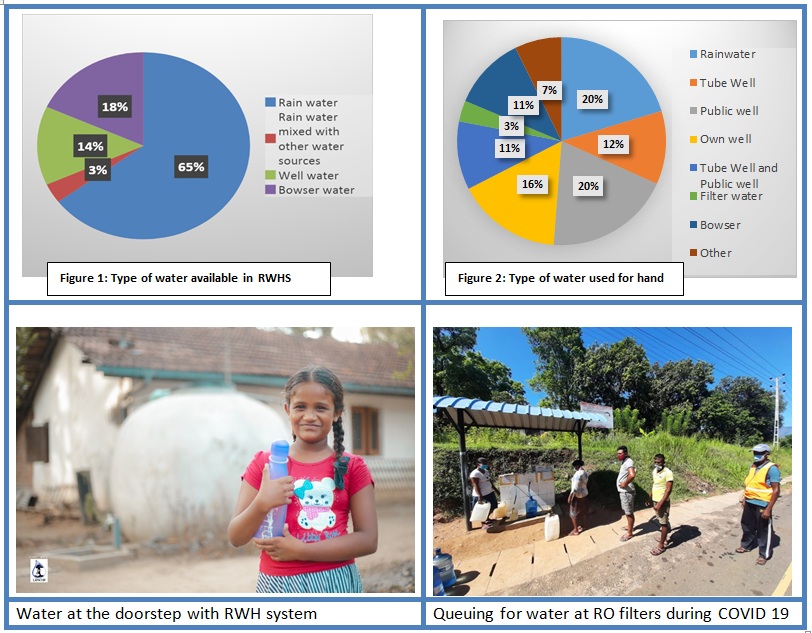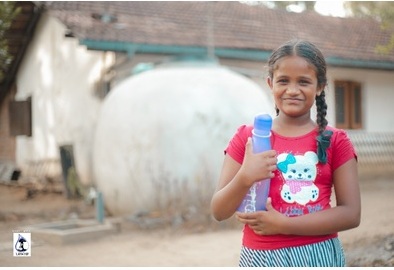Summary of the Survey Conducted of RWHS Beneficiaries Households during Covid-19 Pandemic Crisis
COVID-19 has focused global attention to clean water for frequent hand washing, drinking and personal hygiene. During the current pandemic, a lack of clean water for drinking and proper hygienic practices has become a major concern for many rural households (where pipe supply is not available) in Sri Lanka and world over.
Lanka Rain Water Harvesting Forum in partnership with USAID is implementing a project titled Safe Disaster Resilient Drinking water for Flood and Drought prone areas in Sri Lanka. The project which commenced in September 2016 have installed 391 domestic rain water harvesting systems (RWHS) in Kilinochchi district in the Northern province, Badulla and Moneragala districts in Uva province.
Survey reveals that beneficiaries of RWHS was better able to cope with water stresses than non-beneficiaries during government imposed lock down due to Covid 19 pandemic in the light of additional hand washing and drinking water need.
Of the 102 beneficiary households surveyed in 3 dry zone districts of Sri Lanka during Covid -19 pandemic lock down in April 2020, 92% had water in their rainwater harvesting system. The 8% RWH which did not have water is due to over usage during the prevailing drought in these districts. Out of the RWHT which did have water, 65% were filled with rainwater and 35% were filled with water brought from bowser or wells (Figure 1).
During the Covid 19 pandemic beneficiaries have used rainwater mainly for drinking, cooking and handwashing. It is more often used for handwashing during this time following Sri Lanka government’s health authority advice, because it is available at the doorstep. All households surveyed in both RWHS and non-beneficiaries have reported that they adhere to government’s advice on washing hands with soap and water before entering the house specially after going out to get groceries or any other purposes. Overall in the 3 districts, the main water source for hand washing is rain water followed by public well and own well ( figure 2).
The main drinking water source for non-beneficiaries of RWHS is public well ( 56%) followed by own wells. These households have faced difficulty obtain water during curfew imposed times since they have to travel up to 1 km to the public wells. Around 19% of the RWHS beneficiaries have shared their rain water with their neighbors during this situation.
Other main source of obtaining drinking water were through RO filters, bowser water supplied by Pradeshiya Sabha or disaster mitigation center during this period. Due to imposed curfew people find it difficult to get supply from regular water sources due to accessibility, delays in bowser supply and economic reasons.
Financial impact of lockdown and growing unemployment means that spending extra on safe water has become a problem for many households.Beneficiaries of RWHS enjoyed having water at their doorstep which is free of charge therefore less economic burden on them during this period, especially for daily earners. Also, for others by having a rain water harvesting system, gave them added storage capacity to get bowser water when it is available on average cost of 30-50 cents per liter, when the rainwater ran out. Whereas non RWH householders who did not have a well in the premises had to wait till the curfew is lifted to get to public wells or RO filters , often traveling up to 1 km get their drinking water and waiting in que for up to one hour.



